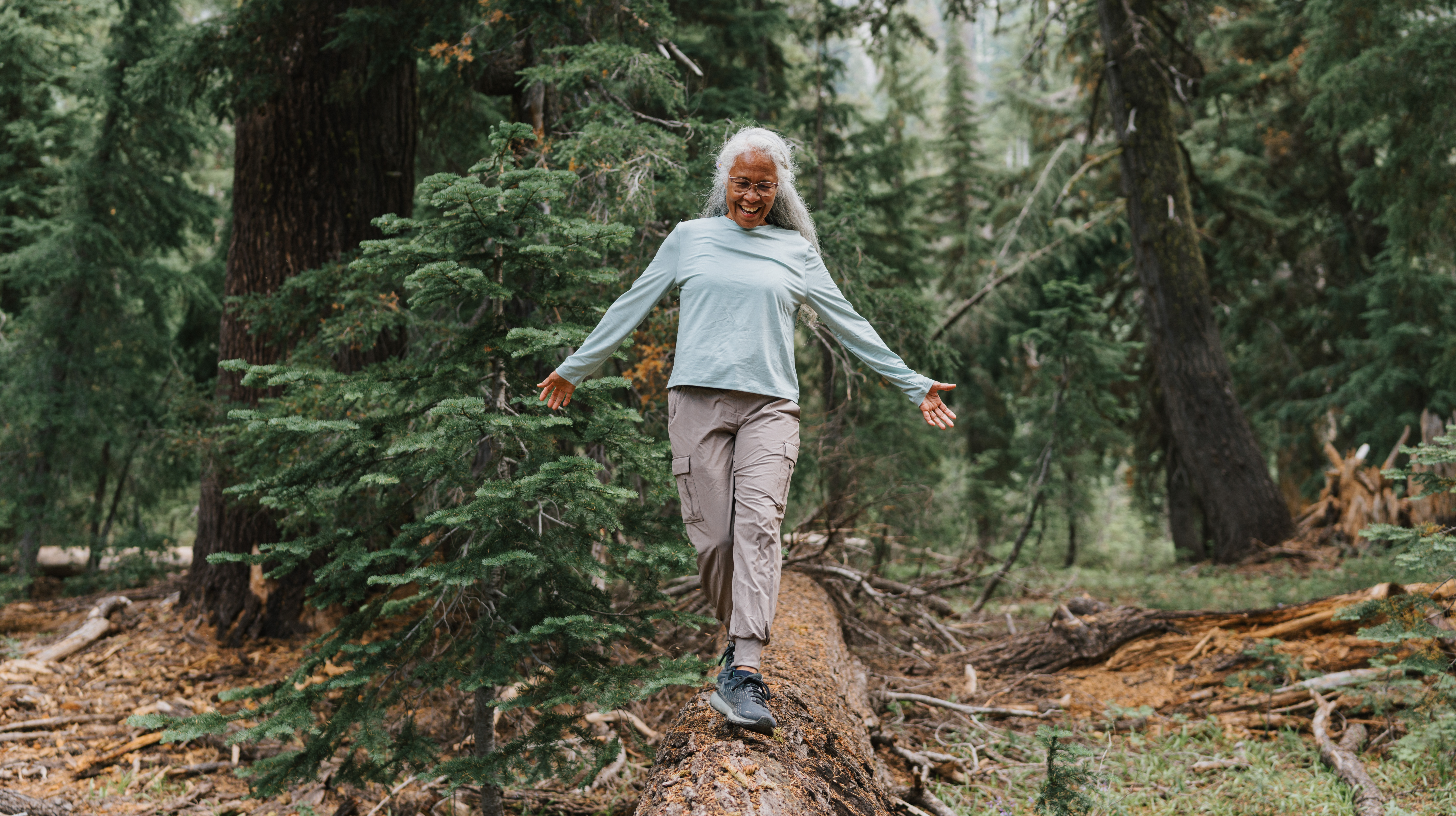A physical therapist recommends this one simple exercise to improve your balance
The tightrope walk is a dynamic balance exercise that can reduce your risks of fall-related injury


Our sense of balance declines with age, but there are things we can do to improve it. Standing on one leg and doing wobble board challenges help—but if you really want to lower your risk of falls, you should do dynamic exercises that improve your balance while moving.
"The body responds to, specifically, what we’ve been practicing," says physiologist Will Harlow in a recently posted YouTube video. "So if you just practice static balancing you’re going to get really good at static balance...when you’re moving, you’re still going to be at risk."
He suggests adding exercises like the tightrope walk into your balance training routine, which he demonstrates below.
How to do the tightrope walk
- Stand at one end of a room with feet hip-width apart.
- Step your right foot forward, placing it on an imaginary tightrope.
- Place your left foot directly in front, ensuring your left heel and right toes are touching.
- Repeat until you’ve reached the end of the room.
Benefits of dynamic balance training
Dynamic balance exercises, like the one above, challenge you to maintain stability while your center of gravity changes. They prevent falls by strengthening your muscles, improving your coordination and increasing your agility.
"Most falls do not happen when we’re stood still," says Harlow. "They happen when we’re turning, they happen when we’re walking and we catch our foot, they happen when we’re on the move."
Physical therapist Madison Banburry agrees that these exercises are important.
"Dynamic balance is key in helping patients prevent falls, as static balance exercises don’t prepare us for regaining our balance mid-stumble," she says. "Tandem or heel-toe walking can help to train the muscles in the toes, ankles, legs and hips that help us keep our center of balance with movement."
Start your week with achievable workout ideas, health tips and wellbeing advice in your inbox.

Jennifer Rizzuto is a freelance fitness journalist based in New York, NY. She’s been a NASM-certified personal trainer, corrective exercise specialist, and performance enhancement specialist for over a decade. She holds additional certifications in nutrition coaching from Precision Nutrition, and pre/post-natal exercise from the American Council on Exercise. As the daughter of a collegiate football coach who was never any good at sports, she understands how intimidating it can be to start an exercise regimen. That’s why she’s committed to making fitness accessible to everyone—no matter their experience level.